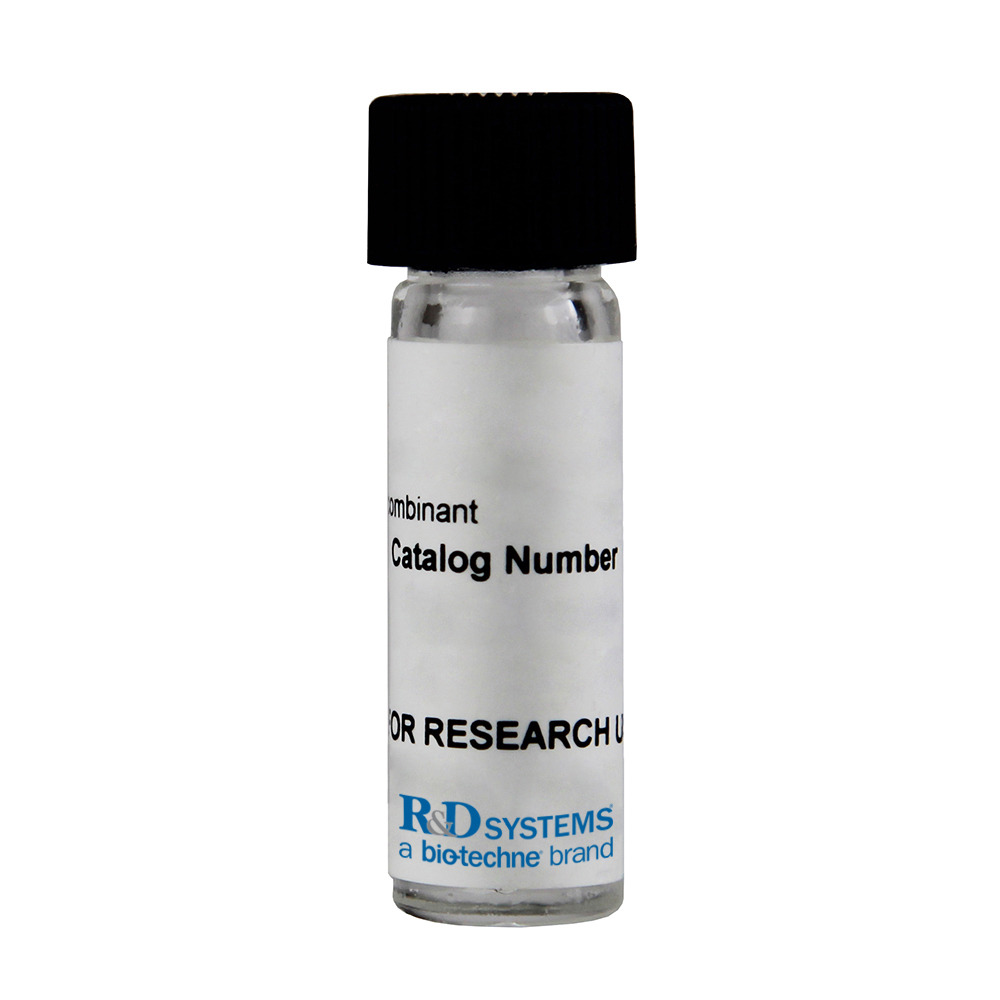

 下载产品说明书
下载产品说明书 下载SDS
下载SDS 用小程序,查商品更便捷
用小程序,查商品更便捷



 收藏
收藏
 对比
对比 咨询
咨询Carrier Free
CF stands for Carrier Free (CF). We typically add Bovine Serum Albumin (BSA) as a carrier protein to our recombinant proteins. Adding a carrier protein enhances protein stability, increases shelf-life, and allows the recombinant protein to be stored at a more dilute concentration. The carrier free version does not contain BSA.
In general, we advise purchasing the recombinant protein with BSA for use in cell or tissue culture, or as an ELISA standard. In contrast, the carrier free protein is recommended for applications, in which the presence of BSA could interfere.
9157-AO
| Formulation | Supplied as a 0.2 μm filtered solution in Sodium Acetate, NaCl and Glycerol. |
| Shipping | The product is shipped with polar packs. Upon receipt, store it immediately at the temperature recommended below. |
| Stability & Storage: | Use a manual defrost freezer and avoid repeated freeze-thaw cycles.
|
Recombinant Mouse IDO Protein, CF Summary
Product Specifications
Ala2-Pro407, with an N-terminal Met and 6-His tag
Analysis

Background: Indoleamine 2,3-dioxygenase/IDO
Indoleamine 2,3-dioxygenase (IDO) is a heme-containing intracellular dioxygenase that catalyzes the degradation of the essential amino acid L-tryptophan to N formyl kynurenine. This degradation is the first and rate-limiting step of the L-kynurenine pathway (1). IDO expression is induced in macrophages, plasmacytoid dendritic cells (pDC), and microglia by multiple inflammatory stimuli including IFN-g, TNF-a, CpG DNA, HIV-1 Tat protein, microbial infection, or GITR Ligand activation (2-9). It can be expressed by tumor cells, pDC in tumor draining lymph nodes, and MDSC in breast cancer (10-12). IDO expression is critical for the ability of these cells to induce the activation of resting Treg and the support of immune tolerance to apoptotic cell debris (7, 11, 13). These cells also suppress anti-tumor immunity (10, 12), the development of autoimmunity (13), and the replication of Chlamydia, Herpes simplex virus, and measles virus (3, 4, 14). In the absence of IDO function, activation of pDC does not induce immunosuppression but instead triggers IL-6 production and the redirecting of Treg to produce IL-17 (7). Mouse IDO shares 61% and 87% amino acid sequence identity with human and rat IDO, respectively (15).
- Munn, D.H. and A.L. Mellor (2016) Trends Immunol. 37:193.
- Thomas, S.R. et al. (1994) J. Biol. Chem. 269:14457.
- Carlin, J.M. et al. (1989) J. Interferon Res. 9:329.
- Adams, O. et al. (2004) Microbes Infect. 6:806.
- Planes, R. and E. Bahraoui (2013) PLoS One 8:e74551.
- O'Connor, J.C. et al. (2009) J. Neurosci. 29:4200.
- Baban, B. et al. (2009) J. Immunol. 183:2475.
- Grohmann, U. et al. (2007) Nat. Med. 13:579.
- Loughman, J.A. and D.A. Hunstad (2012) J. Infect. Dis. 205:1830.
- Holmgaard, R.B. et al. (2015) Cell Rep. 13:412.
- Sharma, M.D. et al. (2007) J. Clin. Invest. 117:2570.
- Yu, J. et al. (2013) J. Immunol. 190:3783.
- Ravishankar, B. et al. (2012) Proc. Natl. Acad. Sci. USA 109:3909.
- Obojes, K. et al. (2005) J. Virol. 79:7768.
- Habara-Ohkubo, A. et al. (1991) Gene 105:221.








 危险品化学品经营许可证(不带存储) 许可证编号:沪(杨)应急管危经许[2022]202944(QY)
危险品化学品经营许可证(不带存储) 许可证编号:沪(杨)应急管危经许[2022]202944(QY)  营业执照(三证合一)
营业执照(三证合一)